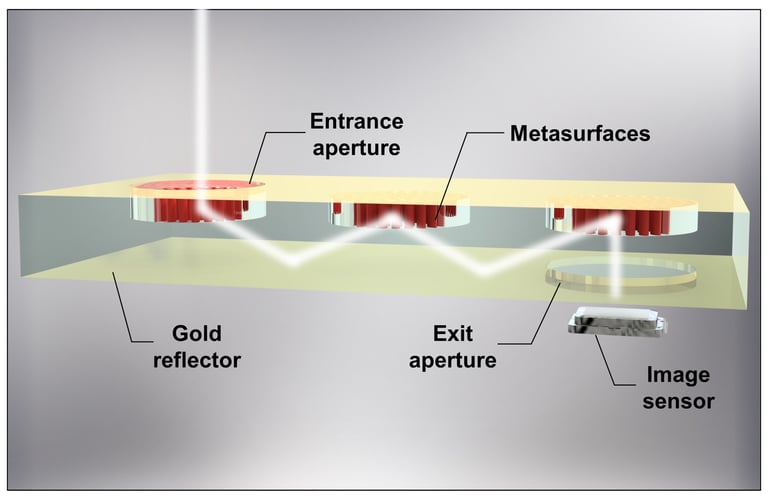Revolutionary Metasurface Lens Drastically Shrinks Camera Size, Boosts Tech Industry Applications
November 20, 2024
Researchers at Seoul National University College of Engineering have introduced a groundbreaking optical design technology that significantly reduces the size of cameras by utilizing metasurfaces.
This innovative lens system is remarkably thin, measuring just 0.7mm, which is less than half the thickness of traditional refractive lens systems.
According to Taewon Choi, a co-first author of the study, the thinness of the folded lens system is essential for miniaturization, particularly in the VR-AR industry.
Conventional cameras typically require multiple stacked glass lenses, which not only adds bulk but also complicates their integration into compact devices such as smartphones and VR-AR systems.
The newly developed camera system boasts a 10-degree field of view and produces high-resolution images that approach the diffraction limit at an aperture of f/4.
This miniaturized camera technology is poised to benefit a variety of sectors, including VR-AR devices, smartphones, medical endoscopes, and drones.
The researchers achieved this advancement by optimizing a metasurface for a specific wavelength of 852 nm and arranging it on a glass substrate, allowing light to be reflected multiple times in a compact, folded configuration.
Metasurfaces are nano-optical devices that manipulate light's intensity, phase, and polarization at a micro scale, enabling the creation of smaller and more efficient lens designs.
Youngjin Kim, the first author of the research, highlights the importance of this study in advancing thinner camera designs through the use of nano-optical devices.
The research was conducted at the Optical Engineering and Quantum Electronics Laboratory, which is currently led by Prof. Yoonchan Jeong following the passing of Prof. Byoungho Lee in November 2022.
This significant advancement in camera technology was published on October 30, 2024, in the journal Science Advances.
Summary based on 1 source
Get a daily email with more Science stories
Source

Phys.org • Nov 20, 2024
Ultra-compact optical design enhances virtual and augmented reality device cameras